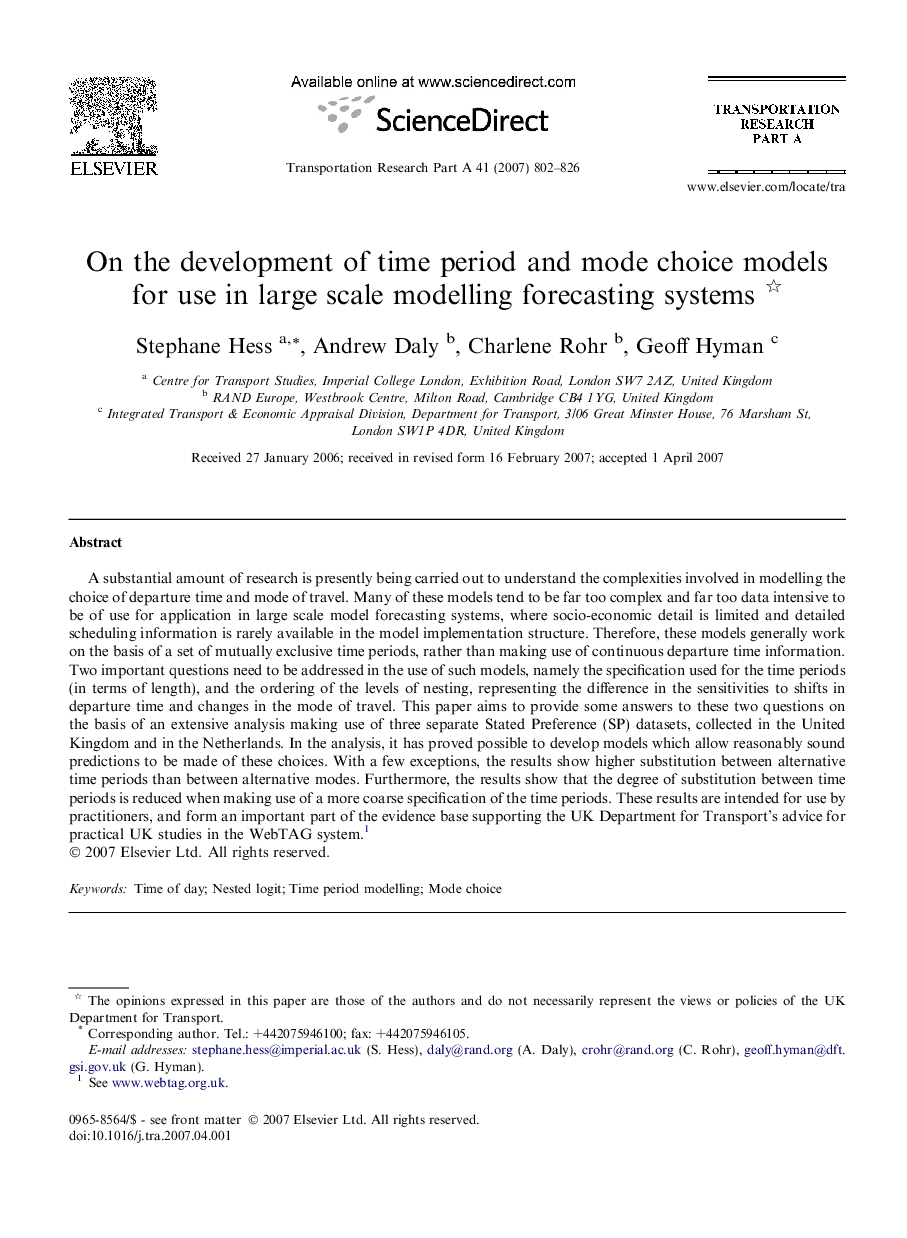| Article ID | Journal | Published Year | Pages | File Type |
|---|---|---|---|---|
| 311663 | Transportation Research Part A: Policy and Practice | 2007 | 25 Pages |
A substantial amount of research is presently being carried out to understand the complexities involved in modelling the choice of departure time and mode of travel. Many of these models tend to be far too complex and far too data intensive to be of use for application in large scale model forecasting systems, where socio-economic detail is limited and detailed scheduling information is rarely available in the model implementation structure. Therefore, these models generally work on the basis of a set of mutually exclusive time periods, rather than making use of continuous departure time information. Two important questions need to be addressed in the use of such models, namely the specification used for the time periods (in terms of length), and the ordering of the levels of nesting, representing the difference in the sensitivities to shifts in departure time and changes in the mode of travel. This paper aims to provide some answers to these two questions on the basis of an extensive analysis making use of three separate Stated Preference (SP) datasets, collected in the United Kingdom and in the Netherlands. In the analysis, it has proved possible to develop models which allow reasonably sound predictions to be made of these choices. With a few exceptions, the results show higher substitution between alternative time periods than between alternative modes. Furthermore, the results show that the degree of substitution between time periods is reduced when making use of a more coarse specification of the time periods. These results are intended for use by practitioners, and form an important part of the evidence base supporting the UK Department for Transport’s advice for practical UK studies in the WebTAG system.1
